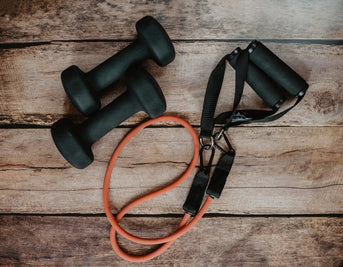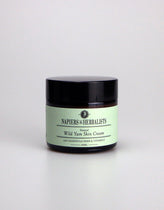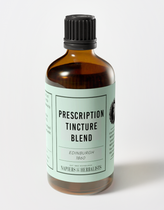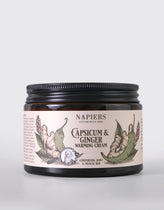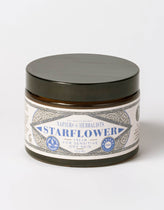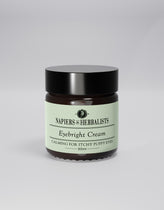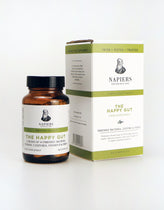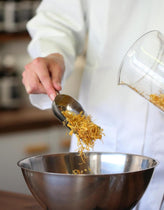Food Sources of Iodine
by Monica Wilde
January 2015
We all need iodine to keep our thyroid (the body's central chemistry controller) healthy. So where does iodine come from and what foods are best for getting enough iodine?

The minimum recommended amount of iodine that you need on a daily basis is 140/150 mcg (UK/WHO). In pregnancy this requirement goes up to 220/250 and when breast-feeding it is 250/290 mcg of iodine a day. This is the minimum daily intake that our thyroid needs to function properly and make sure that our bodies run at the right speed.
For pregnant women this is especially important as without sufficient iodine, the baby's brain development can be affected. Often the body seems to prioritise iodine to the baby as many mums are diagnosed with underactive thyroid soon after the birth.
We've looked at iodine values in food and in the last column worked out exactly how much you'd need to eat of any one food to get enough iodine for the day. Obviously this is not the way anyone would approach a balanced healthy diet, after all no one could eat 250 apples in one day!
However, it does clearly indicate the need to include ocean sourced or fortified foods on a daily basis unless you take a seaweed supplement. You'll also notice some wide variations in the same food so ensure you eat plenty of iodine rich ocean fish and seaweed.
Iodine in Food
| Food |
mcg/100 g
|
mcg/serving
|
Serving size |
To reach 150 mcg min. a day |
| Napiers Hebridean Kelp |
700 |
350 |
1 capsules - 500g |
1 |
Capsule |
| Oysters (a) |
160 |
144 |
6 oysters - 90g |
7 |
Oysters |
| Sushi (with seaweed) (a) |
92 |
92 |
1 sushi roll - 100g |
2 |
Sushi rolls |
| Cod, cooked (b) |
|
87 |
75 g (2 ½ oz) |
2 |
Portions of cod |
| Haddock, cooked (b) |
|
87 |
75 g (2 ½ oz) |
2 |
Portions of haddock |
| Cottage cheese, non-org (b) |
|
65 |
250 mL (1 cup) |
2 |
Cups of cottage cheese |
| Canned salmon (a) |
60 |
63 |
1 small tin - 105g |
3 |
Small tins of salmon |
| Soynuts (b) |
|
60 |
60 mL (1/4 cup) |
3/4 |
Cup of soynuts |
| Yogurt, plain (b) |
|
58 |
175 g (3/4 cup) |
3 |
Pots of non-organic yoghurt |
| Milk, non-organic (a) (b) |
23 |
52-62 |
1 large glass - 250ml |
3 |
Large cups of milks |
| Steamed snapper (a) |
40 |
50 |
1 fillet - 125g |
3 |
Fillets of fish |
| Eggs (b) |
|
48-52 |
2 large |
6 |
Large eggs |
| Beans (navy, black-eyed) (b) |
|
46-53 |
175 mL (3/4 cup) |
3 |
Cups of beans |
| Yoghurt, fruit (non-org) (a) (b) |
16 (a) |
32-35 |
1 tub 175g / 200g |
3-5 |
Non-organic fruit yoghurts |
| Liver (beef) (b) |
|
32 |
75 g (2 ½ oz) |
5 |
Servings |
| Turkey, light (b) |
|
30 |
75 g (2 ½ oz) |
5 |
Servings |
| Eggs (a) |
22 |
19 |
2 eggs - 88g |
16 |
Eggs |
| Beans (pinto, kidney )(b) |
|
19-28 |
175 mL (3/4 cup) |
4-6 |
Cups of beans |
| Bread, fortified non-org (a) (b) |
46 (a) |
17-32 |
1 slice 30g (a) 35g (b) |
4-11 |
Slices non-organic bread |
| Beef, various cuts (b) |
|
11-14 |
75 g (2 ½ oz) |
12 |
Servings |
| Chicken, light or dark (b) |
|
11-12 |
75 g (2 ½ oz) |
12 |
Servings |
| Tuna, canned (a) (b) |
10 |
10-15 |
Can 75g (b) 95g (a) |
10-15 |
Tins of tuna |
| Ice cream (non-organic) (a) |
21 |
10 |
2 scoops - 48g |
30 |
Scoops |
| Lima beans (b) |
|
8 |
125 mL (1/2 cup) |
9 |
Cups of beans |
| Shredded wheat, fortified (b) |
|
8 |
30 g |
9 |
Shredded wheats (fortified) |
| Lamb chop (b) |
|
8 |
75 g (2 ½ oz) |
19 |
Servings |
| Pork, various cuts (b) |
|
5-9 |
75 g (2 ½ oz) |
30 |
Servings |
| Cheddar cheese (a) |
23 |
4 |
2.5 cm cube - 16g |
38 |
Cubes of non-organic cheese |
| Rice, white (b) |
|
4 |
125 mL (1/2 cup) |
37 |
Cups of rice |
| Green peas (b) |
|
3-4 |
125 mL (1/2 cup) |
25-37 |
Cups of peas |
| Bread (organic) (a) |
3 |
2 |
2 slices - 60g |
75 |
Slices of organic bread |
| Beef, pork, lamb (a) |
<1.5 |
<1.5 |
2 loin lamb chops |
200 |
Lamb chops |
| Apple, oranges, fruit (a) |
<0.5 |
<0.6 |
1 apple |
250 |
Apples
|
One question people always ask after looking at this list is why organic milk and dairy products are lower in iodine? Organic dairy products are lower in iodine because organic farmers do not use iodine disinfectants that get into the milk when milking the cows. The upside of organic milk is the lack of pesticides known to be present in non-organic milk. So if you buy organic do make sure that you consume plenty of fish and seaweed.
(a) Food Standards Australia New Zealand Sept 2012
(b) Institute of Medicine. Dietary Reference Intakes. Washington: The National Academies Press;2006 and Pennington, J. and Douglass, J. Bowes and Church's Food Values of Portions Commonly Used, 18 E. Lippincott Williams and Wilkins, 2005.
(c) Combet E, Ma ZF, Cousins F, Thompson B, Lean ME. (2014). Low-level seaweed supplementation improves iodine status in iodine-insufficient women. Br J Nutr. 1-9. PubMed PMID: 25006699.
